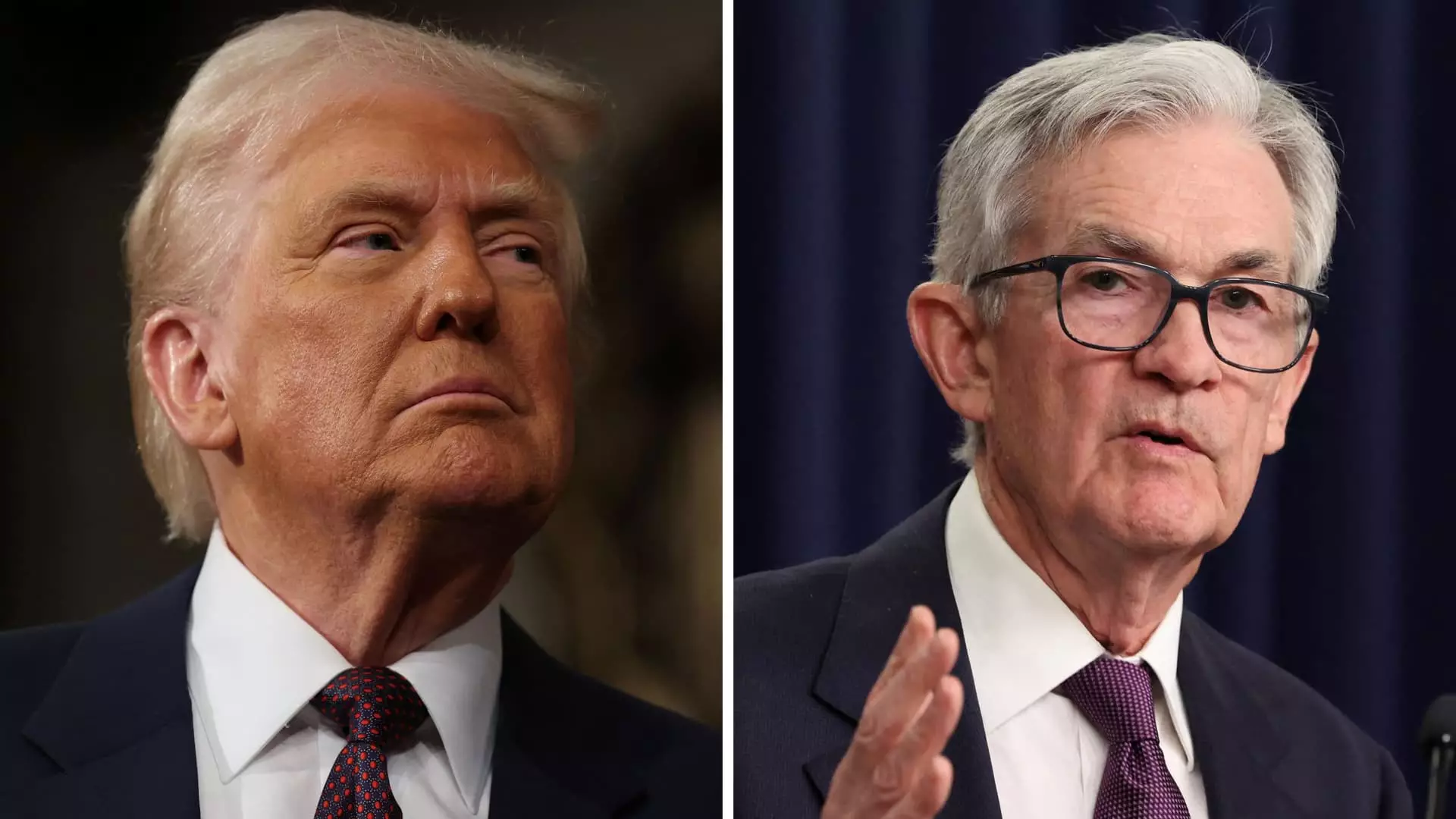In an era where every tweet can sway markets, former President Donald Trump’s recent comments about the Federal Reserve are as intriguing as they are alarming. Not only did Trump renew his call for lower interest rates, but he also threw shade in the direction of Chair Jerome Powell, insinuating that a forcible termination might be on the table. This move might seem rooted in political theatrics, but the implications extend far beyond mere shock value. It raises critical questions about the balance of power within the Federal Reserve and the broader impact on economic stability.
The Dilemma of Economic Signals
During a recent address, Powell pointed out a critical paradox: the tariffs imposed by the Trump administration create a complicated environment for achieving monetary policy goals. There’s an inherent tension between taming inflation and fostering growth, and Powell’s acknowledgment of these conflicting priorities suggests a keen awareness of the fraught terrain in which economic leaders operate. When central bankers find themselves painted in a corner by political decisions, how can they maintain independence without jeopardizing public trust? Trump’s continuous critiques might come across as populist sentiment, but they undermine a vital pillar of our economic governance: the Fed’s autonomy.
The Dance of Political Influence
Trump’s statements could be wielded as a weapon against Powell, signaling that the current administration might not hold the same reverence for independent banking practices. Historically, political pressure on central banks has led to disastrous economic outcomes. When monetary policy becomes a political pawn, it risks alienating investors and the general populace, creating volatility that could hinder growth—not help it. This is a dangerous game, as the economy requires steady hands to navigate the inevitable storms, not erratic swings dictated by Twitter feuds and personal grievances.
The Global Perspective on Interest Rates
As Trump pointed out, the European Central Bank is slashing rates in a bid to stimulate growth. However, it’s vital to bear in mind that the American economy operates under its unique set of circumstances and vulnerabilities. Lowering rates, while sometimes beneficial, also poses risks of flooding the economy with cheap money, potentially leading to asset bubbles or unsustainable growth. Instead of merely mimicking Europe’s policies, we must craft our economic strategy based on robust economic indicators and prudent foresight.
A Call for Realism Amidst Rhetoric
What’s glaringly missing from Trump’s recent statements is a balanced understanding of economic realities. Instead of insisting on pat solutions like rate cuts, we ought to engage in dialogue that examines systemic issues, such as income inequality and disconnected labor markets. For a politician who vows to put “America First,” advocating for a strong, independent Fed that aligns monetary policy with long-term growth strategies should be a high priority. The American economy deserves a sober approach to these challenges, not an impulsive reaction to short-term political gain. Ignorance of this may lead us into a precarious situation in the future where both political and economic stability hang by a thread.

